Goose Berry growing in South Africa
Gooseberries are probably one of the more well-known berry plants and fruits in South Africa. Other than the processed products, the fresh fruit are now found in more markets and chain stores during the last couple of years. The market for this highly valued and nutritional berry is increasingly growing as our market also tends to focus more on organic and healthier food options.
Description
Cape Gooseberry – Physalis peruviana
Physalis was originally discovered and named in Peru and was known to the Incas. It is an herbaceous perennial which grows wild in the Andes. Its common name originated in Australia after its journey from South Africa to the Cape of Good Hope, even though it is not a native to the Cape Province.
It is a straggling, upright bushy shrub, up to 1.8m tall that bears yellow fruit inside a brown papery envelope, resembling a Chinese lantern, called a husk. With a sweet pineapple-like flavour, the fruit (also called Inca berry or ground cherry) is native to South America.
Landscape Value
Grows and fruits well in a pot or may be used as a border plant where the soft grey-green foliage can be used to offset other species. It can also serve as a great border filler, where the fruit can be accessed and freely eaten.
Nutritional and Health benefits
- Gooseberries are low in calories; 100 g of fresh berries hold just 44 calories. As in blackcurrants, they too have significantly high amounts of phenolic phytochemicals, especially flavones and anthocyanins. Both of these compounds have been found to have numerous health-benefiting effects against cancer, aging, inflammation, and neurological diseases.
- The berries are an excellent source of vitamin-C. 100 g of fresh berries provide 27.7 μg or 46% of daily-recommended intake values of vitamin C. Research studies have shown that consumption of fruits rich in vitamin-C helps the human body develop immunity against infectious agents, and help scavenge harmful oxygen free radicals from the human body.
- They carry a small amount of vitamin-A. 100 g berries have 290 IU or 10% of RDA of this vitamin. Vitamin-A required for maintaining the integrity of mucosa and skin and essential component of the visual cycle. Also, consumption of natural fruits rich in vitamins and flavonoid antioxidants has been found to protect from lung and oral cavity cancers.
- Fresh berries contain small amounts of essential vitamins such as pyridoxine (vitamin B-6), pantothenic acid (vitamin B-5), folates, and thiamin (vitamin B-1). Some of these vitamins are essential in the sense that the body requires them for metabolism from external sources to replenish.
- Furthermore, gooseberries contain moderate levels of minerals such as copper, calcium, phosphorus, manganese, magnesium, and potassium.
Gooseberry uses:
The plant bears edible fruit, great eaten fresh, dipped in melted chocolate or fondant icing. Use to decorate cheesecakes, pavlovas and gateaux. Cook and use in pies or make into juices, smoothes, jam or jelly. The berries also compliment seafood and lamb shanks when made into a sauce as it has a beautiful crisp flavour. Due the fruit’s decorative appearance, it is also popular in restaurants as an exotic garnish for desserts. The berries are also delicious added to green salads and go well in savory dishes. Gooseberries freeze best whole and should be used when still partially frozen. It is also easy to dry and package as dried fruit seeing that it has a long shelve live making it an ideal snack.
The berry is high in protein, contains vitamins C, A, a few B vitamins as well as iron, potassium, niacin, magnesium, calcium and zinc. Gooseberries also have pectin which assists with digestion, lowers cholesterol and prevents the increase of glucose levels in the body, making them the perfect snack for people who are sensitive to glucose.
Seeing that the Cape Gooseberry has a long shelve live of up to 25 days, it is a very good berry to market fresh to national and exporting markets.
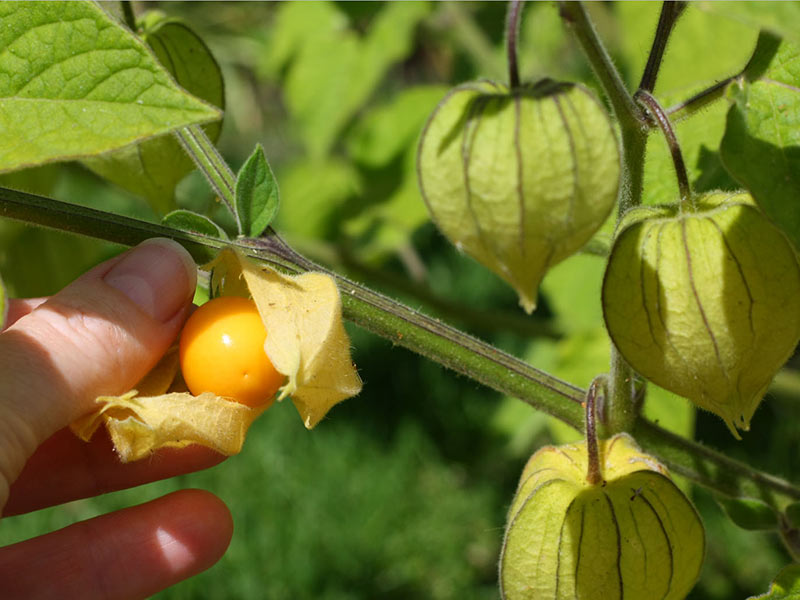
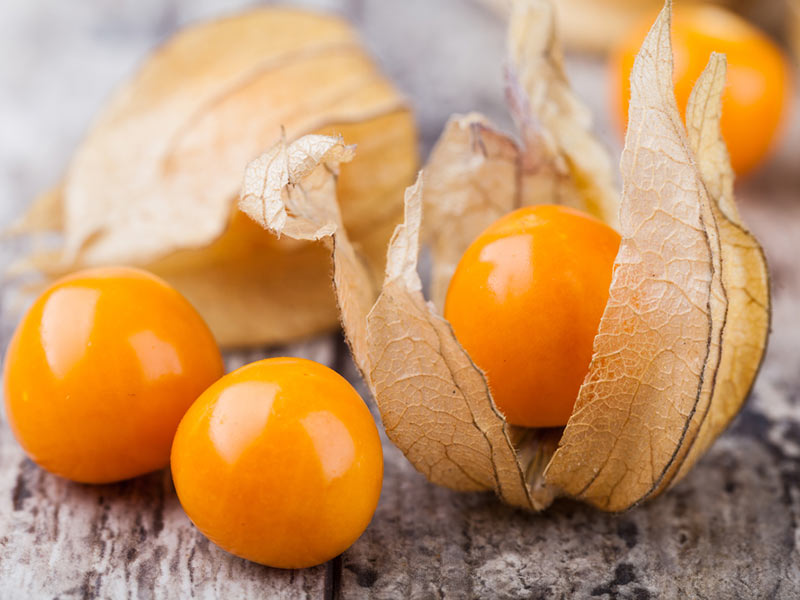
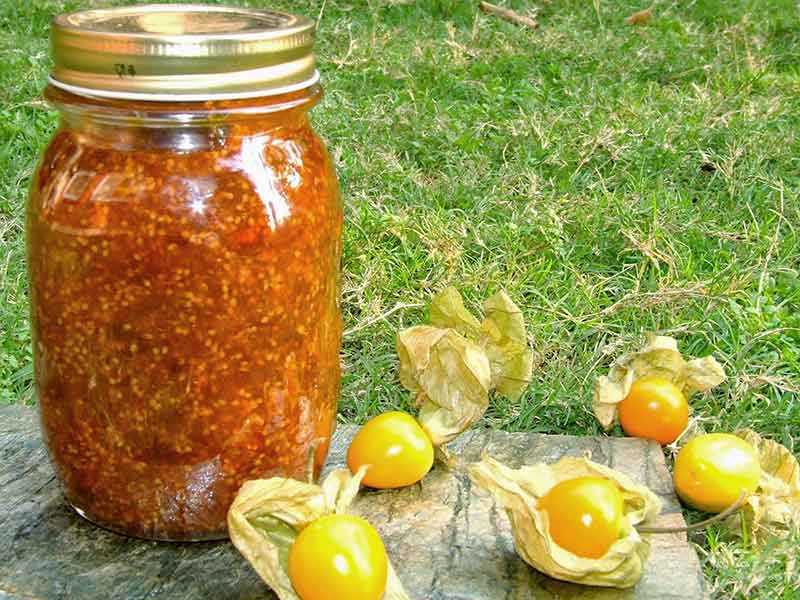
Site selection and preparation:
The Gooseberry is easy to grow. The plant should be placed in full sun, but tolerates part shade. A soil PH level of 5.5 – 7.0 is needed for optimal growth. The plant prefers loamy to sandy soil which is well drained and kept moist. It can tolerate a bit of clay. Plenty of organic matter such as well aged manure and compost can be worked into the soil prior to planting.
Gooseberries should not be planted where heavy frost collects as they are frost-tender and can be injured at areas where the winter temperatures usually drops below -4’C. Frost protection should be used if chosen to plant in such extreme cold areas of the country.
The plants can be pruned back after all frosts have passed. The plants can handle periods of drought. Too much moisture could encourage fungal problems.
Spacing
0.6m – 1.0m between plants with row spacing between 1.5m – 2.8m
Plant density varies but 4000 to 6000 plants per Ha is usually planted.
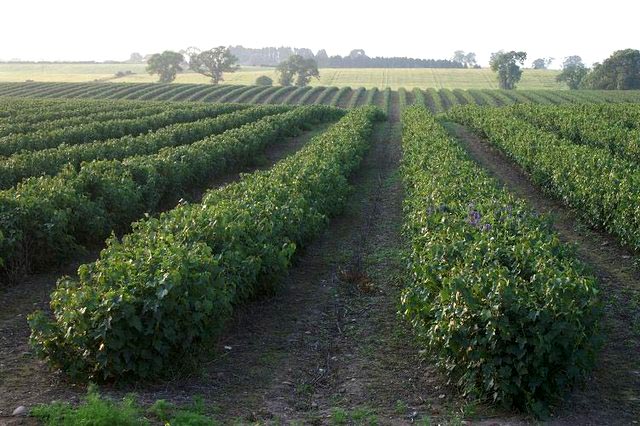
Interesting Fact:
The gooseberry can be found in a neat paper like wrapping called a husk, which closely resembles Chinese Lanterns. In some areas they are also referred to this name. If the berry is left in its husk after harvest, it can have a shelve life of 30 days plus even at room temperatures.
Irrigation
The plant needs consistent watering to set a good fruit crop, but does not tolerate water logging. Where drainage is a problem, the plantings should be on a gentle slope or the plants should be planted on raised beds. Irrigation can be reduced when the fruits are maturing. The plants become dormant during drought.
Container Growing
Gooseberries will also grow and fruit well in a container, just be sure to choose one large enough as it should be at least 40cm in diameter and 50cm high. The container also needs to have a draining hole. A good planting medium is a sandy to loamy soil mixed with a bit of compost or potting soil.
Fertilising your Gooseberry plants
In most situations Cape Gooseberries do not need much fertilizer. Unneeded fertilizer especially those high in nitrogen, could result in lots of vegetation and little or small fruit. High yields have been maintained with little or no fertilizer. With larger plantations where crops are harvested annually a thorough and balanced fertilization program needs to be incorporated.
Pruning & Trellising
Prune back hard in spring to encourage new growth for fruiting. Any dead wood needs to be removed during or after winter. Summer growth shoots should be cut back to one half to two-thirds to a bud to promote a bushy growth pattern. The centre branches can also be slightly pruned to provide enough light penetration.
Harvesting and storage
The fruit can easily be handpicked.
If the fruit is left inside the intact in its husks, its shelf life can be more than 30 days at room temperature. If removed from the husk it can be kept fresh for a couple of days if refrigerated.
Commercial growing- Yields
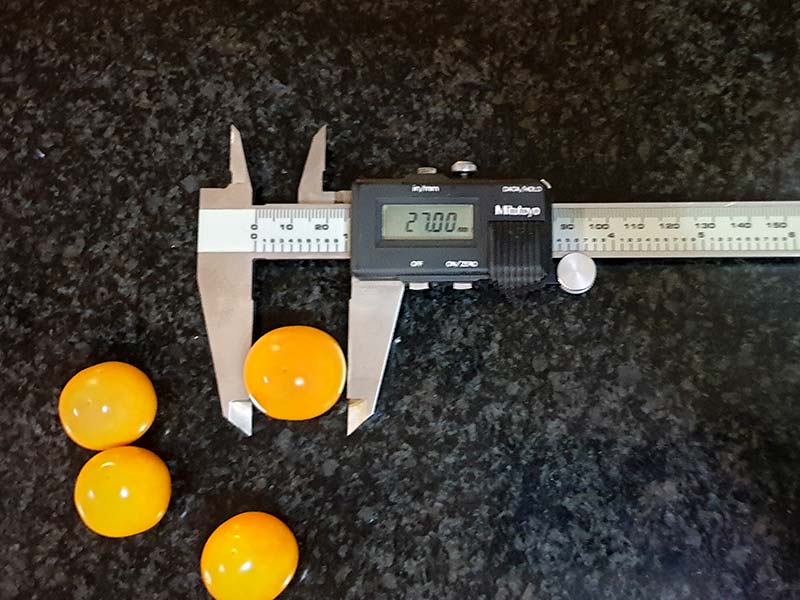 A single plant can yield up to 300 berries per plant and most plants will have multiple fruit flushes per year especially in the milder climates. Annual yields of 8 tons per hectare can be expected in most soils and climates although yields of more than 20 tons per hectare per year have been reported. Depending on the soil conditions, climate, production system used, most gooseberry plants can be mature within one year after planting.
A single plant can yield up to 300 berries per plant and most plants will have multiple fruit flushes per year especially in the milder climates. Annual yields of 8 tons per hectare can be expected in most soils and climates although yields of more than 20 tons per hectare per year have been reported. Depending on the soil conditions, climate, production system used, most gooseberry plants can be mature within one year after planting.
Our hardened seedlings (plugs) can start to produce fruit within 1oo days after planting.The industry standard requires a berry with a diameter of a minimum of 12mm. We here at Berries For Africa grow and supply gooseberry varieties that are fairly sweet, good color and firmness and with an exceptionally large fruit with a diameter of up to 27mm.
Pests and diseases
In South Africa, gooseberry plants are not bothered by many pests and diseases although cutworms and caterpillars are the most important of the many insect pests that attack the Cape Gooseberry. Red spider mites may also be found, but can be treated by inducing friendly predators such as Phytoseiulus persimilis or Macrolophus pygmaeus. The potato tuber moth could also be a problem if the plants are in the vicinity of potato fields. Some birds can eat the fruits if not repelled although the fruit grows inside a papery calyx which deters most bird species from eating it.
Some diseases such as powdery mildew and soft brown scale can be found.
There are many organic and conventional pesticides and fungicides registered to be used on gooseberries in SA such as mineral oils, natural pyrethrums, copper soaps, azoxystobin, copper oxychloride etc.

